Triangle Shirtwaist Factory Fire and Migrant Workers
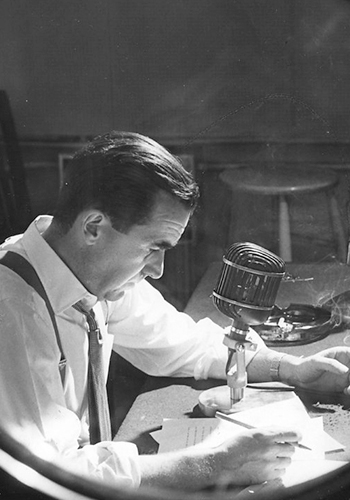
Early to Mid-1900s
In this case study, you will analyze how journalists covered the treatment of sweatshop and migrant farm laborers in the early to mid-1900s. You will then plan an investigative news segment that explores how workers are treated today. (Cover photo: Edward R. Murrow in his office at CBS, 1957. Photo courtesy of the University of Maryland Library for educational purposes only. )
”Only an enlightened, aroused and perhaps angered public opinion can do anything about the migrants. The people you have seen have the strength to harvest your fruit and vegetables. They do not have the strength to influence legislation. Maybe we do.“
—Edward R. Murrow, broadcaster
Essential Question
How did journalists cover the exploitation of migrant and immigrant workers in the early to mid-twentieth century?
Overview
Newspaper and television journalists have produced investigative reports on the abuse of immigrant workers since the 1890s. The newspaper coverage of the Triangle shirtwaist factory fire of 1911 and the grape strike of 1965 encouraged legislation for factory safety and field worker contracts.
Throughout this case study, you will:
- Watch a news interview program based on Edward R. Murrow’s 1960 documentary Harvest of Shame and connect the issues of migrant farmworkers from 1960 to today.
- Analyze how 20th century journalists covered the issues of factory working conditions and migrant farmworkers.
- Plan your own video investigation exploring the issues that immigrants face today.
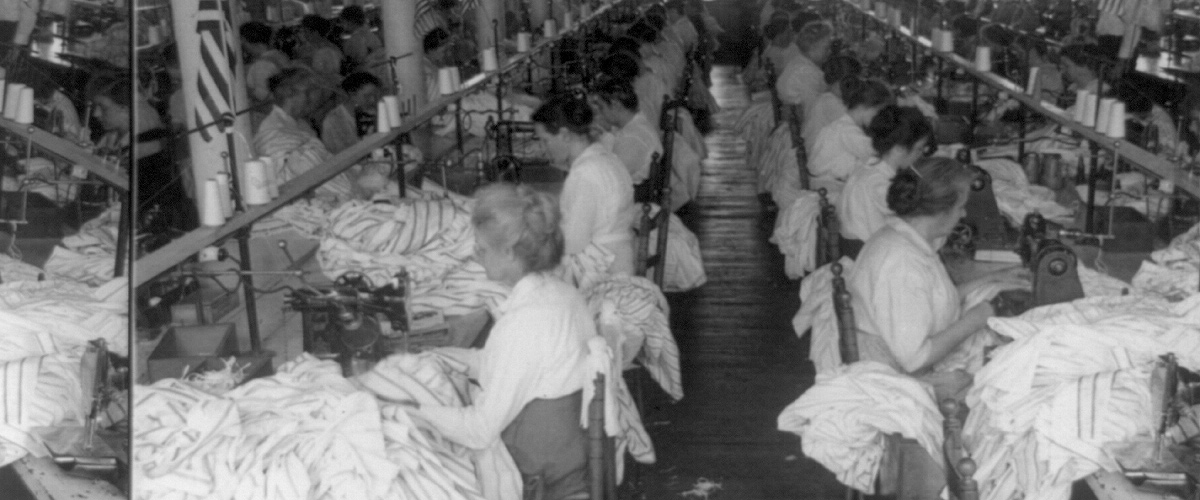
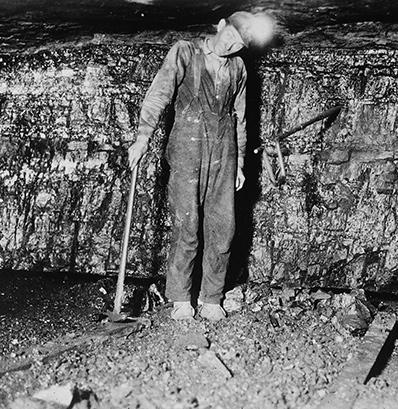
Context
The exploitation of immigrant workers extends throughout our history, from colonial times and indentured servitude to migrant field work today. In the 1860s, Chinese laborers, who built the western railroads, were paid pittances, slept twenty to a room, and died in explosives accidents. European miners signed on to treacherous conditions at port cities; immigrant children who should have been in school worked in textile mills and in the sweatshops and crowded apartments of New York City's Lower East Side.
The plight of recently arrived Lithuanians who went to work in the dangerous and unsanitary meatpacking plants of Chicago shocked readers of Upton Sinclair's 1906 masterpiece The Jungle, which inspired the passage of the Meat Inspection Act and the Pure Food and Drug Act later that year.
The powerful role that journalism could play in telling the stories of immigrant workers was vividly demonstrated in the March 1911 newspaper coverage of the Triangle shirtwaist factory fire, the deadliest industrial disaster in the history of the United States. Because the doors to the stairwells and exits were locked to prevent theft and breaks from work, 146 garment workers, almost all Italian and Jewish immigrant women, perished in the flames; some jumped to their deaths on the pavement below.
The safety legislation passed soon after the fire was the ancestor of today's Occupational Safety and Health Administration (OSHA). The tragedy also reinforced the growth of the International Ladies’ Garment Workers’ Union (ILGWU).
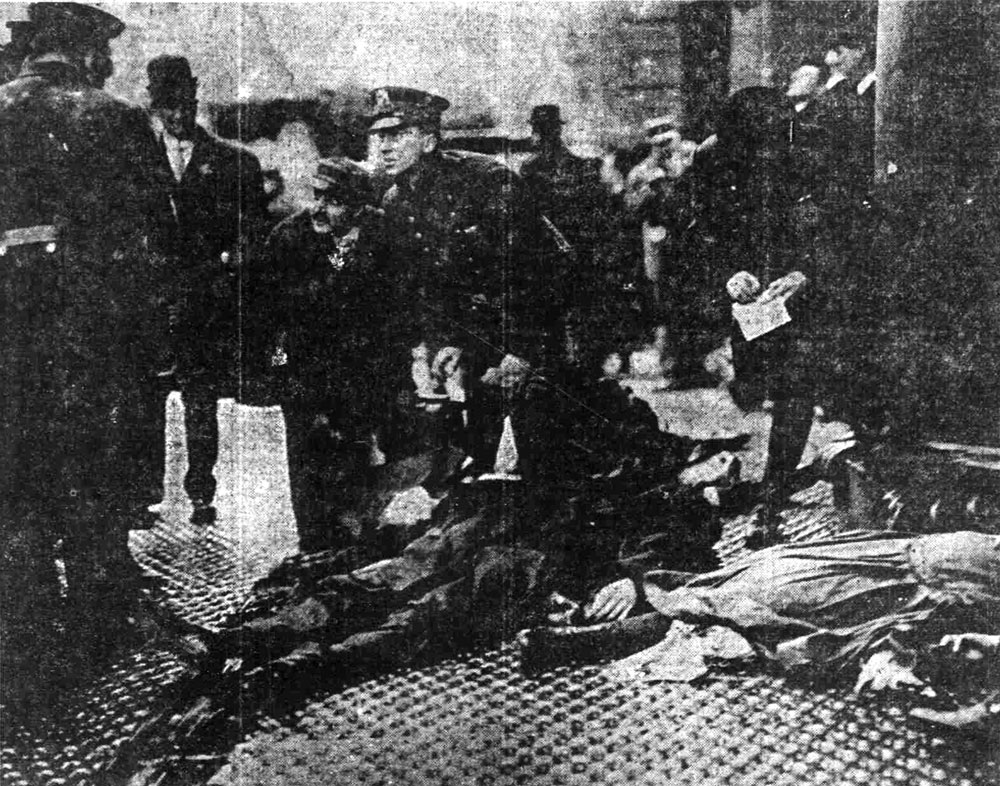
As the twentieth century continued, revelations in books and newspapers were augmented by the powerful new medium of television. Working conditions among the immigrant poor were presented by journalists like Edward R. Murrow, whose landmark CBS Reports program Harvest of Shame aired in 1960. Coverage of the California grape pickers' march, led by Cesar Chavez, raised awareness around the national consumer boycott of grapes and binding contracts with wine companies in 1965.
Discuss the following questions:
- Why were immigrant workers exploited for their labor during America’s history? Provide some examples from the reading.
- How did journalists expose the exploitation of immigrant workers in newspapers and books?
- In 1960, Edward R. Murrow produced Harvest of Shame, featuring the plight of California grape pickers. Why would the medium of television be an effective way to raise awareness of the grape pickers’ working conditions?
Journalists
For months, newspapers covered the Triangle shirtwaist factory fire, including eyewitness accounts, investigations, protests, and reform measures passed by New York City’s government. William Shepherd, a United Press wire reporter in the area at the time of the fire, telephoned in details of the disaster as it happened. Shepherd’s story was then telegraphed to newspapers across the country.
Edward R. Murrow was just three years old when the Triangle shirtwaist factory fire happened in 1911. He came of age at the time of radio, first as a war correspondent, broadcasting nightly during Hitler's Blitzkrieg bombings on London; and then television. Murrow ended each broadcast with the signature farewell to Londoners during the Blitz: “Good night and good luck.” (Those words were the title of a Hollywood film about Murrow, sixty years later.)
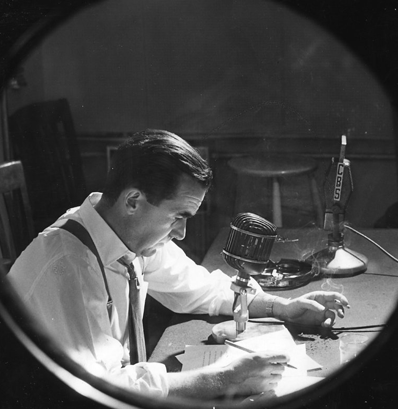
Murrow spoke eloquently of the responsibilities of television journalism. His final series for the CBS television network was the groundbreaking news documentary Harvest of Shame, which told of the plight of black and white migrant farmworkers along with Mexican immigrant fruit and vegetable pickers in California in 1960. The program appeared the day after Thanksgiving to stress the fact that much of the food eaten during the holiday was picked by migrant laborers.
At around this same time, CBS News’s shows began losing viewers to popular TV game shows, and Murrow left to take a job leading the US Information Agency, which provided the official views of the government abroad. Murrow died of lung cancer at the age of fifty-seven, a few years after producing the first television segment on the connection between smoking and cancer.
Discuss the following questions:
- In 1911, journalist William Shepherd and the United Press used new technology of the telephone and telegraph to report on the Triangle shirtwaist factory fire. How did this change the way news got to the public than 100 years earlier?
- Explain the impact of airing Morrow’s program Harvest of Shame the day after Thanksgiving.
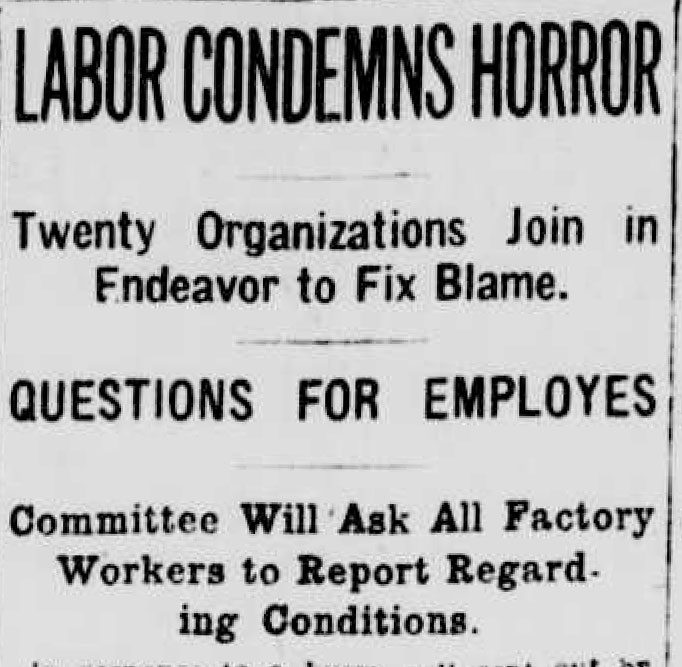
News Format
William Randolph Hearst's New York Journal had pioneered the use of huge banner headlines during the Spanish-American War of 1898. Graphic photographs and drawings added shock value. The photographs of the 146 people who died in the Triangle fire, their coffins, and their burned sewing rooms and rickety building conditions filled the front pages of the nation’s newspapers.
Fifty years later, Americans began tuning into the evening news on their televisions. Broadcast segments featuring the inhumane working conditions of migrant farmworkers, many whose young children worked alongside them, were highlighted by journalists like Murrow and struck a chord with the American public.
While the press’s stories raised awareness of workplace conditions, labor union leaders during the Triangle fire and the migrant protests also knew how to use the news media to draw attention to labor strife.
Discuss the following questions:
- How did newspapers like William Randolph Hearst’s New York Journal attract readers? Do you feel this is a good method to attract the public’s attention? Why or why not?
- Journalism covered the Triangle shirtwaist fire and the plight of migrant workers 50 years later. What is the common message sent by journalists in each of these stories?